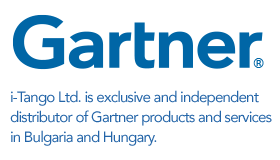High-performing teams need a leader who is a facilitator and enabler.
Contributor: Susan Moore
If you take a look at high-performing teams within your organization, they generally exceed expectations and demonstrate remarkable resilience in times of adversity and crisis. They’re more productive, better at honoring commitments and meeting deadlines. They’re often more innovative and creative, and usually capable of functioning autonomously in most daily activities.
Speaking at Gartner Symposium/ITxpo in India this week, Gartner vice president Debra Logan said: “Simply putting a group of your highest performers together doesn’t automatically create a high-performing team. Provided you create the right conditions and leadership, it is possible to significantly elevate the performance of largely average performers as well.”
Ms. Logan says it’s important for CIOs and IT leaders to foster five team qualities:
- Clarity of purpose – With a clear sense of purpose, members feel personal goals align closely with the overall team direction and take pride in being a member. This empowers decision making.
- Clarity of roles and contributions – Members have been chosen for particular skills and strengths they offer, and work well together because they complement each other.
- Clarity of communication – High-performing teams are great at communicating with each other openly and honestly, tackling even potentially sensitive topics head-on, while being encouraging and supportive.
- Clarity of ownership – A clear understanding of ownership and delegation is important when relying on each other to complete complex tasks. This avoid gaps and overlaps that would diminish the team’s effectiveness and create uncertainty and tension.
- Celebration of success – High-performing teams take time to celebrate their successes, to emphasize the team work and reflect on the collective achievement.
Trying to change too many habits, cultural assumptions and unspoken rules at once may cause more confusion and stress than progress. So, start by identifying the three attributes that the team and you want to work on first.
“One thing to remember is that a high-performing team is never finished or perfected; it is perpetually improving,” added Ms. Logan.
While high-performing teams usually have a high degree of self-management and self-organization, it certainly doesn’t mean they don’t need you as their leader. The most important role you can fulfil is that of the facilitator and enabler of high performance.
Gartner clients can read more in the report ‘Leading From the Heart: The Art of Leading High-Performing Teams.’
Debra Logan will speak on this topic at Gartner Symposium/ITxpo in Goa, India, November 2-5.
Gartner Symposium/ITxpo is the world’s most important gathering of CIOs and other senior IT executives. IT executives rely on these events to gain insight into how their organizations can use IT to overcome business challenges and improve operational efficiency.
Upcoming dates and locations for Gartner Symposium/ITxpo 2015 include:










